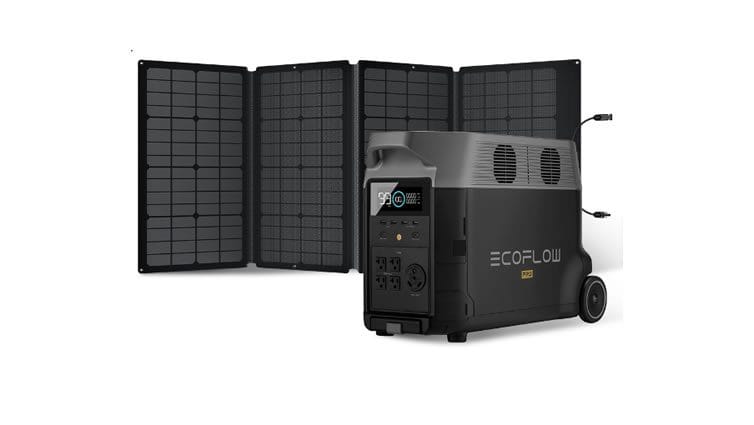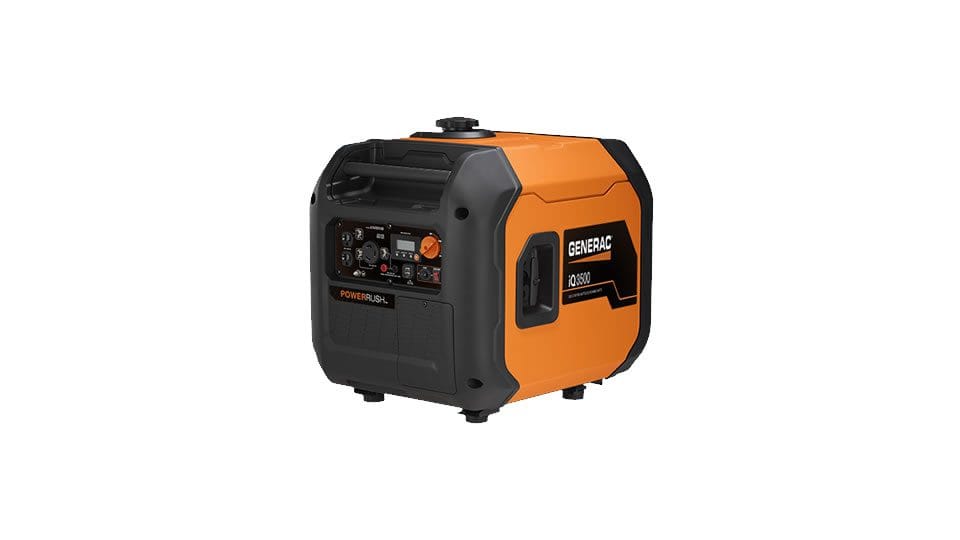Solar Generator Review and Tips
If you’re considering a solar generator or want to make the most of one you already own, this guide will give you the tips and insights you need. Solar generators are increasingly popular for their eco-friendly and efficient way to power up devices, whether you’re off the grid or simply looking for a reliable backup at home. From powering camping adventures to keeping your essential devices running during an outage, solar generators offer a clean, quiet, and portable solution for energy needs.
In this post, we’ll review some of the top solar generators on the market and share tips on how to maximize their performance. You’ll discover what to look for when choosing a solar generator, learn practical ways to extend battery life, and get advice on keeping your generator in top condition. Whether you’re a first-time buyer or a seasoned user, these insights will help you get the best results from your solar generator investment. Let’s dive in!
Maximizing Battery Life in Remote Areas
When you’re in a remote area, the last thing you want is for your solar generator’s battery to drain quickly. A little bit of planning can go a long way in making sure your power lasts throughout your adventure. Let’s look at a few practical strategies to help you make the most of your solar generator’s battery life, so you’re never left in the dark!
Choose the Right Solar Generator Settings for Longer Battery Life
Many solar generators come with different settings to help you control power use, which is essential in remote areas. Whenever possible, use low-power or “eco-mode” settings to conserve battery. Eco-modes are designed to optimize energy use without sacrificing too much functionality, especially useful if you’re charging multiple devices like phones, cameras, or lights. You’ll find that this mode keeps everything running smoothly while giving you more time before the next recharge.
Keep in mind that your solar generator might also have settings for low-power charging or standby modes. If you’re not actively using your devices, putting your generator in standby can help you conserve energy for when you need it most. It’s a small step but can make a big difference over time, allowing you to enjoy your outdoor experience without worrying about losing power halfway through.
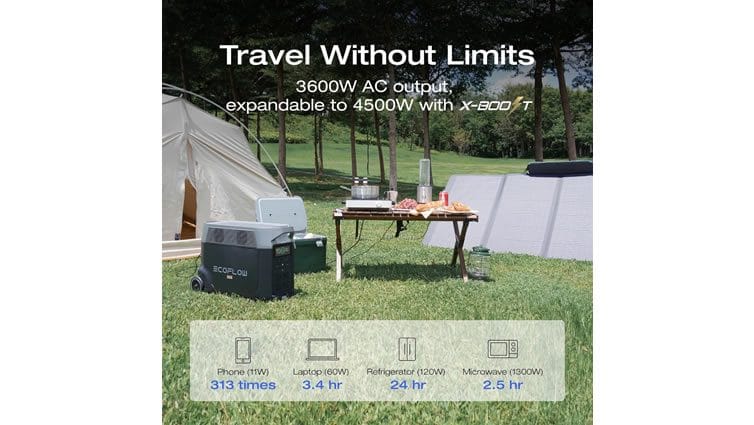
Prioritize Essential Devices to Save Power
Let’s face it—when you’re in a remote area, not every device needs to stay charged 100% of the time. Prioritizing your most essential items, like GPS devices, phones, or emergency lights, ensures that you have power where it matters most. These items often don’t use as much energy, so keeping them topped up won’t drain your battery as quickly.
Avoid charging large, high-energy devices like laptops or portable refrigerators unless absolutely necessary. These gadgets tend to require more power, which can quickly eat into your battery’s reserves. Instead, reserve these power-hungry devices for use during the day when the sun is shining, so your solar generator can recharge simultaneously. This way, you can keep the essentials running, ensuring you always have reliable power on hand.
Optimize Solar Panel Positioning for Maximum Efficiency
Getting the most out of your solar generator in remote areas means using every bit of sunlight available. Proper panel positioning is critical to maximize energy input, so your battery charges faster. Place your solar panels where they’ll get direct sunlight without obstructions like trees, tents, or vehicles casting shadows. Even a small shadow can reduce charging efficiency, which could make a big difference over the course of the day.
An easy trick is to adjust your solar panels as the sun moves throughout the day. This sounds tedious, but it only takes a few minutes and can significantly increase charging speed. Aim for a 45-degree angle when possible, as this angle allows panels to absorb the maximum amount of light. By keeping an eye on panel positioning, you can ensure your battery gets fully charged while you’re out exploring or relaxing, setting you up for a worry-free evening.
Manage Battery Temperature for Better Performance
Extreme temperatures—whether too hot or too cold—can shorten your battery life. When you’re in remote areas, this can be a challenge, but with a bit of caution, it’s manageable. In hot weather, keep your solar generator shaded or covered to prevent overheating, which can drain the battery faster. Placing a light cover over the generator without blocking airflow can help keep it cool. Avoid putting your solar generator directly on hot surfaces like rocks or concrete, as they absorb heat and can warm up your equipment.
In colder areas, cold temperatures can reduce battery capacity, meaning you’ll get less out of a full charge. To help prevent this, try to keep your generator in a tent or insulated bag when not in use. Some solar generators even come with temperature regulation settings, so check your manual to see if this feature is available. Managing your generator’s temperature keeps it in good condition and helps you make the most of its battery life, regardless of the weather.
Practice Efficient Charging Habits
One of the best ways to maximize battery life in remote areas is to adopt efficient charging habits. Try to charge your devices in batches rather than charging them one at a time. By grouping your charging sessions, you can take advantage of peak sunlight hours and reduce the number of times you need to turn your generator on and off. Each time you start your generator, it uses a bit of extra power, so keeping it on only when necessary can help save energy over time.
Another smart habit is to unplug devices as soon as they’re fully charged. Leaving devices connected after they reach 100% can waste power and drain the battery faster. Many devices keep drawing a small amount of power even when fully charged, so it’s always best to unplug them promptly. This might seem like a small step, but over a few days, it can help you conserve a surprising amount of energy, giving you more battery life for when you really need it.
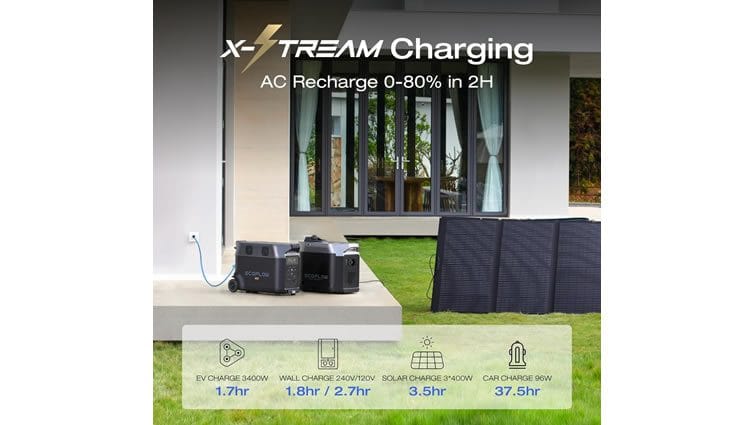
Use LED Lights for Nighttime Activities
If you’re using your solar generator to power lights in remote areas, opt for LED lights. LEDs are far more energy-efficient than traditional bulbs, and they can help your battery last longer. Whether you’re setting up camp, reading a book, or just enjoying a cozy evening outdoors, LED lights are bright yet consume very little power. Many LED lights are also adjustable, so you can dim them to save even more energy.
Using LED lights means you won’t drain your solar generator’s battery as quickly, and you’ll still have plenty of power for other devices. You can find solar-friendly LED lights specifically designed for outdoor use, which are durable, lightweight, and easy to carry around. They’re a perfect companion for any solar generator setup in remote areas, providing just the right amount of light without the hefty energy consumption.
Plan for Optimal Power Use and Enjoy the Outdoors
Maximizing your solar generator’s battery life in remote areas doesn’t have to be complicated. With a few mindful strategies, you can make your power last as long as possible while enjoying the peace and freedom of nature. By adjusting your settings, prioritizing essential devices, optimizing solar panel positioning, managing temperature, and adopting smart charging habits, you’ll be well-prepared for any adventure. So, grab your solar generator, hit the great outdoors, and enjoy the confidence of having reliable power wherever you roam!
Essential Setup Tips for Remote Campsites
Setting up camp in remote areas is all about planning and efficiency, especially when it comes to your solar generator. Ensuring you have a reliable power source can make all the difference between a memorable adventure and a frustrating experience. Let’s go over some essential setup tips that will help you make the most out of your solar generator, keeping your devices powered and your spirits high while enjoying the wilderness!
Position Your Solar Generator for Maximum Sunlight
The sun is your solar generator’s best friend, so make sure to position it in a spot where it gets full sunlight. While this might sound obvious, setting up in a shaded or partially covered area can significantly reduce your charging efficiency. Check your location throughout the day to see how the sun shifts and adjust your setup as needed to catch those rays.
To make things easier, consider bringing along a small, portable solar panel stand if your generator doesn’t have one. This will allow you to angle your panels perfectly toward the sun without any hassle. A 45-degree angle is typically best for most locations and seasons, helping you absorb the most energy possible. You’ll soon notice how much quicker your generator charges when properly positioned, leaving you more time to relax and enjoy the view.
Secure Your Solar Generator Against the Elements
Weather can be unpredictable, especially in remote locations, so it’s important to protect your solar generator from unexpected rain, wind, and dust. A simple weatherproof cover can shield your generator and panels without interfering with their ability to charge. Many solar generator covers are designed to be breathable, allowing airflow while keeping out the elements.
If wind is a concern, secure your solar panels with a few lightweight anchors or even just some large rocks found around your campsite. Anchoring them will help prevent any accidents, keeping your panels in place and generating power even on breezy days. And if a sudden downpour threatens your setup, quickly covering your generator and panels with a tarp can prevent water damage and keep everything in good working order.
Plan Your Camp Layout for Easy Power Access
When setting up your campsite, think about where you’ll need power and position your solar generator accordingly. Place it in a central spot so it’s easy to connect devices without running extension cords all over the place. For instance, setting it up between your tent and cooking area allows you to conveniently charge your essentials, like lights, phones, or cooking gadgets, as you need them.

Avoid putting the generator too close to areas with a lot of foot traffic to prevent accidental bumps or falls. Designating a “power station” corner of your camp can keep things organized and reduce the risk of tangles or damage to cords and cables. With your generator easily accessible, you can quickly recharge devices and get back to enjoying your day with minimal interruptions.
Use Energy-Efficient Gadgets to Save Power
Remote camping means being smart with power, so using energy-efficient gadgets can really extend your solar generator’s charge. LED lights, for example, are great because they use minimal power yet provide plenty of brightness. Opt for a solar-powered phone charger or low-wattage appliances, like compact camping stoves or battery-operated fans, to avoid draining your generator too quickly.
If you’re charging multiple devices, consider rotating them to prevent overloading your solar generator. Start by charging your essential gadgets first, then switch to less crucial items like cameras or tablets. This approach helps you make the most of your generator’s capacity without running out of power before the end of your trip. You’ll enjoy all the comforts of home while camping without the worry of sudden battery depletion.
Set Up Your Solar Panels Away from Potential Shadows
The location of your solar panels can dramatically impact charging speed, so make sure there aren’t any shadows blocking them. Look for clear, open areas away from trees, tents, or other campers that could cast a shadow across your setup. Even a small shadow on part of a solar panel can reduce its charging efficiency, slowing down the overall power generation.
As the day goes on, move your solar panels to keep up with the sun’s position in the sky. A few quick adjustments can keep your generator charged, and you’ll find it’s worth the small effort to get full sunlight all day. By keeping shadows off your panels, you’re ensuring your devices stay charged and ready for any camping adventure.
Pack Backup Power Options Just in Case
It’s always smart to have a backup power option when camping remotely, as weather or unexpected shade can impact solar charging. Consider bringing along a small power bank or an extra set of solar panels for added assurance. These backups can come in handy if you face a few cloudy days or can’t fully charge due to tree cover.
Having a power bank for your essentials, like phones or lights, means you’re never left entirely without power, even if your solar generator can’t reach full charge. Plus, power banks are lightweight and easy to carry, so they’re perfect for quick boosts when you’re on the move. It’s an extra layer of security that ensures your time in nature goes smoothly, with power whenever you need it.
Keep Your Generator and Panels Clean for Best Results
Dust, dirt, and debris can reduce the efficiency of your solar generator and panels, so a quick wipe-down each day can make a big difference. Use a soft cloth or a gentle brush to clear off any particles, especially if you’re camping in dry or sandy areas. Clean panels can absorb sunlight more effectively, translating to a faster and fuller charge.
Take a minute to clean your generator’s ports and connections as well, ensuring there’s no dirt blocking them. Keeping everything clean helps maintain your generator’s performance and prolongs its lifespan, allowing you to get the best results from your setup. With just a little care, your solar generator will keep powering your adventures without any hiccups.
Enjoy the Benefits of a Well-Planned Solar Setup
Setting up your solar generator thoughtfully at a remote campsite can make a world of difference. With careful positioning, a bit of protection from the elements, and a focus on efficient power use, you’ll have a smooth and enjoyable camping experience. Each of these tips can help you make the most of your generator, allowing you to focus on what truly matters—soaking in the beauty of the great outdoors!
Solar Panel Positioning for Best Output
Getting the best output from your solar generator depends heavily on one key factor—solar panel positioning. Even a small adjustment can lead to significantly faster charging times and better performance, especially when you’re in a remote area relying on the sun. Here’s a simple guide on how to position your solar panels for maximum efficiency, so you can enjoy a reliable power source wherever your adventures take you!

Find the Sweet Spot for Full Sun Exposure
The first step to optimal solar panel positioning is finding a spot with uninterrupted sun exposure. You want a location that’s open and free from any obstructions like trees, rocks, or even your own camping gear. Even small shadows cast by branches or a tent can reduce the energy your solar panels collect, slowing down the charging process.
If you’re setting up in a campsite, scout the area to find a clear spot where the sun hits directly for most of the day. Positioning your solar panels in a sunny area early on in the day can mean the difference between a fully charged solar generator by evening or running low on power. And remember, sometimes moving just a few feet can make all the difference in the world when it comes to soaking up those rays!
Angle Your Panels for Maximum Efficiency
When it comes to solar panel positioning, angle is everything. Placing your panels at the right angle allows them to absorb the most sunlight possible, leading to a faster charge for your solar generator. The ideal angle can vary depending on your location and the time of year, but as a general rule, a 45-degree angle is a good starting point.
Adjusting the angle of your panels every few hours, as the sun moves across the sky, can keep them facing the light for better efficiency. If you’re staying in one place for a while, try experimenting with different angles throughout the day. It might sound tedious, but these little adjustments can add up to hours of extra charge time—well worth it when you need reliable power in a remote area.
Adjust for the Time of Day
The sun’s position changes throughout the day, so adjusting your solar panels accordingly can keep you charging efficiently from morning till evening. In the early morning and late afternoon, tilting your panels at a steeper angle can help capture more light as the sun sits lower in the sky. During midday, a flatter angle often works better since the sun is directly overhead.
A few minor adjustments each day can ensure your solar generator is collecting power as efficiently as possible. If you’re on a multi-day trip, making these small tweaks part of your routine will soon feel like second nature, and your generator will thank you for it with steady power. Plus, it’s an easy and enjoyable way to be more hands-on with your solar setup!
Avoid Shadows for Continuous Charging
Keeping shadows off your solar panels is crucial to maintaining a strong energy flow. When even a small part of a panel is in the shade, it can affect the entire panel’s efficiency, slowing down your solar generator’s charging speed. This means that even tiny shadows—like those from branches, your tent, or even stray items around camp—can disrupt your setup.
Take a moment to check for shadows, especially if you’re camping in a wooded or rocky area where shadows can creep in unexpectedly. As the sun shifts throughout the day, shadows will move too, so be mindful and adjust your panels if needed. You might be surprised at how much a few minor adjustments can speed up your charging time, allowing you to make the most of your solar generator.
Secure Your Panels Against Wind and Shifting
Even with perfect positioning, it’s important to make sure your solar panels stay in place. Wind can easily knock them over or shift them just enough to lower charging efficiency. Use lightweight anchors, rocks, or even tent stakes to secure your panels firmly on the ground or against a surface. This way, you don’t have to constantly check to see if they’ve moved out of position.
Windy conditions can be a common issue in open camping areas, so a little preparation goes a long way. Securing your panels not only helps them charge efficiently but also prevents any potential damage. A stable setup means you can enjoy the day’s adventures with peace of mind, knowing that your panels are positioned to capture every bit of sunlight.

Clean Panels Mean Better Output
Dust, dirt, and even pollen can accumulate on your solar panels, reducing their efficiency over time. If you’re in a remote area, it’s especially important to keep an eye on cleanliness since outdoor environments can lead to quick buildup. A quick wipe-down with a soft cloth or brush is all it takes to keep your panels clean and performing their best.
Cleaning your panels once a day can make a noticeable difference in charging speed and efficiency. Make it part of your morning or evening routine at camp, and you’ll be able to maintain optimal performance without much hassle. A clear panel means better light absorption, which translates to faster charging for your solar generator.
Practice Positioning for Different Environments
Every camping environment brings unique challenges for solar panel positioning. If you’re by a lake, you might have to deal with glare or reflection, whereas in a forested area, shadows could be a bigger concern. Getting familiar with positioning techniques will help you adapt to different environments and make the most of your solar generator.
Try practicing setting up your solar panels in different ways when you have the chance. This way, when you’re out in the wild, you’ll already know how to adjust for trees, hills, water, or any other environmental quirks. Learning how to make quick adjustments gives you confidence that, no matter where you go, you can depend on your solar generator to provide steady power.
Enjoy a Power-Rich Experience
Solar panel positioning is the secret ingredient for getting the best output from your solar generator in any outdoor setting. By finding a sunny spot, adjusting angles, avoiding shadows, and securing your panels, you can maximize efficiency and keep your power going strong. With these easy positioning tips, your solar generator will be ready to fuel your adventures, allowing you to focus on exploring, relaxing, or capturing the perfect photos.
Off-Grid Cooking with Solar Power
Cooking off-grid doesn’t mean you have to give up warm meals and tasty dishes. With the help of a solar generator, you can enjoy the luxury of a hot meal while being miles away from the nearest power line. This guide will walk you through essential tips for off-grid cooking with solar power, from planning your meals to choosing the right equipment. Get ready to impress your campmates (or just yourself) with some delicious, solar-powered feasts!
Choose Energy-Efficient Appliances for a Longer Charge
The secret to successful solar-powered cooking off the grid is selecting energy-efficient appliances that make the most of your solar generator’s charge. Portable appliances like small electric stoves, rice cookers, or kettles are great options because they’re compact and don’t require a lot of power to run. Opting for energy-efficient gear means you can cook more meals without draining your generator too quickly.
When choosing appliances, look for those designed for camping or low-wattage cooking. For example, a small induction cooktop uses significantly less power than a standard electric stove and can still whip up a satisfying meal. By choosing energy-conscious tools, you’ll not only save power but also be able to cook a wider range of meals, whether it’s breakfast pancakes or a cozy dinner stew.
Prep Ingredients for Fast and Efficient Cooking
One of the best ways to conserve power while cooking off-grid is by prepping ingredients ahead of time. Chopping vegetables, marinating proteins, and even pre-cooking some items can make a big difference in how long it takes to cook each meal. The less time your appliances are running, the longer your solar generator can last.
Think about packing meals that require minimal cooking time, like stir-fries or one-pot pasta dishes. These meals are quick, easy, and delicious, perfect for off-grid cooking. You’ll save time and energy by getting as much done beforehand as possible, which means you can keep your solar generator charged for other needs, like charging your lights or phone.
Optimize Your Cooking Times for Sunlight Hours
Cooking off-grid often means planning your meal prep around the sun’s schedule. By timing your cooking to the brightest parts of the day, you can rely on your solar panels to keep your solar generator topped up while you cook. This is especially helpful if you’re using appliances that might draw more power, like a portable oven or electric kettle.
Cooking during daylight hours allows your generator to recharge while in use, giving you the flexibility to cook more without worrying about losing power. It’s like working with the sun as your cooking partner! And if you’re camping for multiple days, making this a routine can ensure you have enough power each day for cooking and other essentials, keeping your off-grid adventure comfortable and convenient.
Use a Slow Cooker for Low-Energy, Long-Cooked Meals
Believe it or not, a slow cooker can be one of the best tools for solar-powered cooking. These cookers use minimal energy and are perfect for making hearty stews, soups, or chili while you go about your day. Just plug it into your solar generator, toss in your ingredients, and let it do its thing.
With a slow cooker, you can have a hot meal ready by evening without constantly using up energy. It’s also a set-it-and-forget-it appliance, which means you don’t have to watch over your food, giving you more time to enjoy other activities. Plus, there’s nothing quite like a slow-cooked meal after a long day of hiking or exploring, especially one that didn’t sap all your generator’s power!
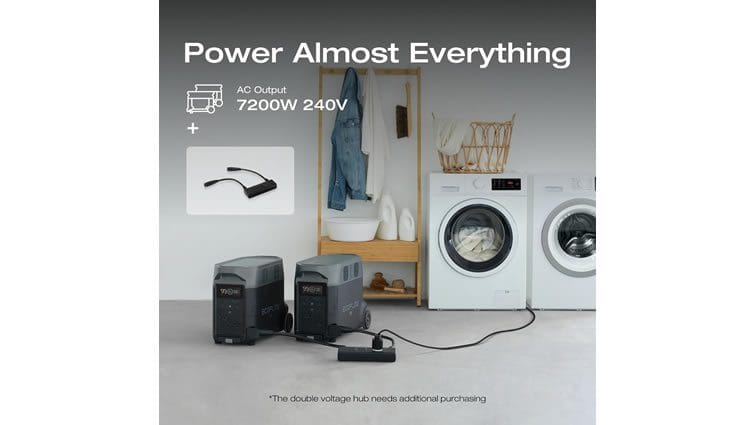
Think About Backup Cooking Options for Cloudy Days
When relying on a solar generator, weather can be a factor. Cloudy days can make it harder to keep your generator fully charged, so having a backup cooking option is always a smart move. Simple tools like a small gas camping stove or portable grill can save the day if your solar generator is low on power.
Having a backup gives you peace of mind, especially on multi-day trips. It’s a great way to ensure you can still enjoy cooked meals no matter what. You can even reserve your solar power for other essentials like lights or phones, using your backup stove only when needed. It’s all about flexibility and being prepared for whatever Mother Nature throws your way.
Try Solar-Powered Cooking Appliances
Solar-powered cookers are another exciting option for off-grid cooking, giving you a way to cook directly with sunlight. Solar ovens, for example, use reflective materials to concentrate sunlight and cook food without needing any power from your solar generator. These can be used for slow-cooking meals or even baking bread on a sunny day.
Using a solar cooker means you’re preserving more power in your generator for other uses, and it’s a fun way to experiment with cooking in nature. These cookers are generally lightweight and easy to set up, and they provide an eco-friendly, zero-electricity cooking solution. Plus, cooking directly with sunlight feels like the ultimate off-grid experience!
Enjoy One-Pot Meals for Simplicity and Savings
When cooking off-grid, one-pot meals are a game-changer. They’re simple to make, require minimal energy, and create fewer dishes to wash. Think of hearty meals like chili, pasta, or veggie stir-fries that only need one appliance to cook. These meals help conserve energy, allowing your solar generator to stay charged longer.
You can also get creative with one-pot meals by adding different spices or ingredients to keep things interesting. With less prep and cooking time, you’ll spend more time enjoying the great outdoors and less time managing your cooking setup. It’s a win-win situation that keeps your belly full and your solar generator in top shape.
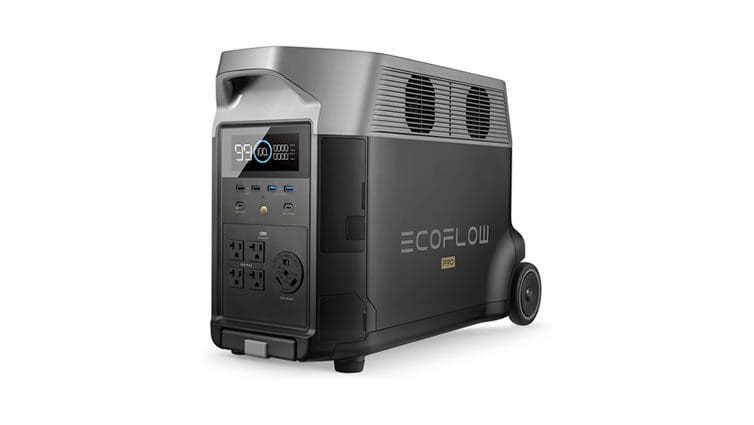
Make Cleanup Easy with Minimal Waste
When you’re cooking off-grid, cleanup should be as simple as possible. Use biodegradable dish soap and bring a few reusable cloths or towels to avoid waste. For an eco-friendly touch, pack meals in reusable containers that can double as cooking or serving dishes. Fewer dishes mean less water used and less strain on your solar generator if you’re heating water to wash up.
Keeping things efficient in the cleanup department lets you focus more on enjoying your meal and your surroundings. Plus, using less water and fewer disposable items means you’re reducing your impact on the environment, which is always a plus when camping off-grid.
Embrace the Joy of Solar-Powered Cooking
Cooking with a solar generator off the grid is a rewarding experience that brings out the best of both technology and nature. By choosing energy-efficient appliances, prepping ingredients, and timing your cooking with sunlight, you can enjoy delicious meals without sacrificing power for other essentials. Embrace the unique challenge and satisfaction that comes from cooking off-grid, knowing you’re doing it in a way that’s sustainable and adventurous!
